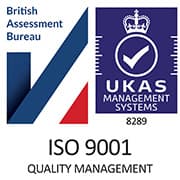Concrete Inspection, Testing and Repair
Concrete analysis is a complicated and specialist subject for which a vast amount of research and development has been undertaken over the years. An in-depth understanding of the behaviour and chemistry of concrete is necessary when dealing with concrete. There are many problems commonly found such as physical damage caused by vehicular impact and damage caused by concrete being incompatible with the ever changing environment.
The following paragraphs summarise some of the more common defects which we have dealt with.
Spalling (surface flaking) of concrete can be due to a number of factors from a lack of cover to reinforcement, corroding reinforcement and high salt content through to Alkaline Aggregate Reaction (AAR), commonly known as concrete cancer. AAR is a result of high alkaline cements reacting with certain aggregates in concrete. This causes aggregate to chemically transform into a gel like material which when moist swells, exerting considerable pressure on the surrounding concrete resulting in cracking and de-bonding of reinforcement.
Corrosion of reinforcement occurs when concrete has been damaged and also if protective alkalinity of concrete has been neutralised by an acid environment. A detailed investigation is necessary to determine the cause of corroding reinforcement and there are a number of proven remedies, which can be very successful.
We have experience in the assessment, monitoring, testing and repairing of bridges, car parks, buildings and other large concrete structures.
Assessment of 1960s Reinforced Concrete Building
We have undertaken an assessment of a large warehouse owned by Railtrack which consists of a reinforced concrete frame and floors. A problem arose with spalling (concrete flaking at the surface) concrete to the soffits of the floors and beams. We carried out a detailed inspection and prepared a report with recommendations for repair. The report included a detailed analysis of the stability of the structure and load capacity of the floors with reduced reinforcement area resulting from reduction in size due to corrosion. The repairs specified prevented further corrosion taking place and reinstated spalled concrete with a suitable material with strength and properties similar to the host concrete. This eliminated differential movement, which could otherwise have caused further deterioration
